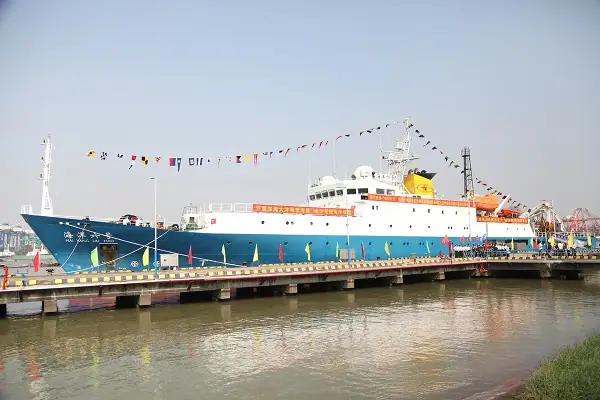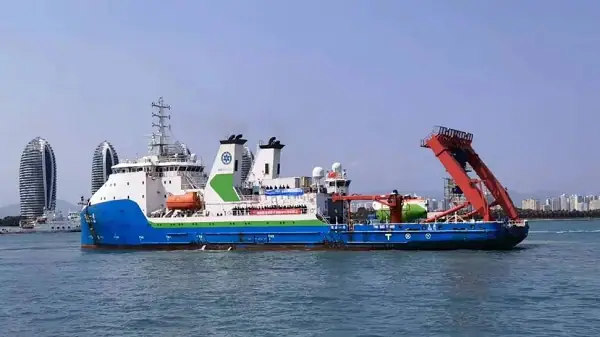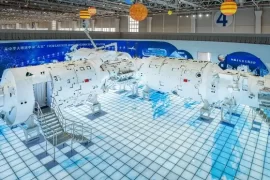The ocean floor is home to vast mineral resources, including polymetallic nodules that contain nickel, copper, manganese, and cobalt, which are crucial for the renewable energy industry. China’s deep-sea mining efforts are gaining momentum as the country seeks to reduce its reliance on foreign suppliers and secure access to these essential minerals. However, China faces significant challenges in terms of knowledge, technology, and hardware, which highlights the importance of government attention and investment.

The Importance of Deep-Sea Mining for China
China already dominates the land-based global supply chains of Rare Earth Elements (REEs), along with its control over most extraction and processing infrastructure. Now, with its expansion into deep-sea mining (DSM), China is further solidifying its control over these essential metals, which are critical for a range of technologies, including renewable energy, electronics, and defense systems.
In an interview with the China Daily, Ye Cong, the deputy director of the China Ship Scientific Research Center in Jiangsu province, emphasized the importance of deep-sea mining for China. He highlighted that a large proportion of the metals extensively used in Chinese factories need to be imported. Mining these minerals from the seabed could help reduce China’s heavy reliance on foreign suppliers.
Chinese Deep-sea mining activities
The International Seabed Authority (ISA) has sanctioned 31 contracts for the exploration and development of the ocean floor outside of national boundaries, with Chinese companies holding five of these contracts. In 2017, Chinese scientists discovered polymetallic nodules on the Puyuan seamount located south of Taiwan, highlighting the country’s potential for deep-sea mining. More recently, in 2020, China increased scientific exploration efforts from two artificial islands, the Fiery Cross and Subi Reefs in the South China Sea (SCS). This expansion of exploration and development of the ocean floor by Chinese companies and scientists demonstrates China’s growing interest in the potential of deep-sea mining and its determination to secure access to critical resources.
China’s 14th Five-Year Plan (2021-25) emphasizes the importance of technological advancement and the marine economy, including deep-sea mining for critical minerals. The 13th Five-Year Plan also prioritized growing the DSM industry and developing necessary equipment. China has responded by creating laws and regulations to address environmental concerns related to deep-sea mining.

Mission surrounding Oceania
China’s scientific research ship Tansuo-1 has returned to Sanya City in Hainan Province on March 11, 2023 after completing its first international manned deep-diving scientific research mission in the waters surrounding Oceania. The mission began in October 2022 and lasted for 157 days, covering over 22,000 nautical miles around Oceania.
The mission involved ten domestic and international organizations, and the vessel carried the deep-sea manned submersible Fendouzhe (Striver). During the expedition, Fendouzhe successfully completed 63 dives, including four that exceeded the depth of 10,000 meters.

The expedition team carried out the first international, large-scale, and systematic manned deep-diving survey in the Kermadec Trench area of the southwest Pacific Ocean. The team also reached the bottom of two abysses, including the Diamantina Trench in the southeastern Indian Ocean. The team collected samples of abyssal macroorganisms, rocks, concretions, sediments, and water during the dives.
This mission is a significant achievement for China’s deep-sea exploration and scientific research. The success of the mission shows China’s growing capabilities in deep-sea technology, which is crucial for developing and utilizing deep-sea resources.
Challenges Faced by China in Deep-Sea Mining
Ye also outlined the challenges that China faces in deep-sea mining. He explained that it is difficult to extract minerals from a depth of several thousand meters, and a reliable, powerful system consisting of pumps and tubes is needed to bring the mixture of seawater and extracted minerals to ships. Furthermore, China must consider the impact on deep-sea ecosystems and ensure that its mining solutions protect the marine environment and biodiversity. Additionally, China needs to find an economical, sustainable approach to mining from ocean floors.
The Role of Research and Development
Hu Zhen, a senior researcher at the Wuxi center, stressed that exploration and development of oceans have become a significant topic of science and technology, closely related to safeguarding a nation’s marine interests and its international status. During his interview with the China Daily, Hu Zhen urged the Chinese government to speed up the review and approval procedures for major deep-sea hardware research and development and accelerate the implementation of the deep-sea station project.
The Role of China Ship Scientific Research Center
The China Ship Scientific Research Center in Jiangsu province has been carrying out scientific dives using the Jiaolong and Shenhai Yongshi submersibles, which have enabled researchers to carry out preparatory work for deep-sea mining. Ye Cong stated that China will pay more attention to the research and development of techniques and equipment used for deep-sea mining. This includes finding reliable and powerful systems to extract minerals from the ocean floor and developing economical and sustainable approaches to deep-sea mining.







